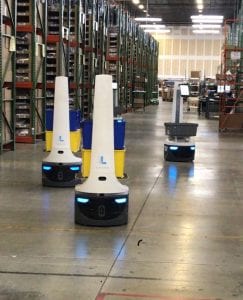In today’s rapidly evolving industrial landscape, integrating automation technologies is no longer a luxury but a necessity for

Let’s delve into the various reasons we’ve seen here at Abel Womack from our customers behind these automation holdbacks. We will assess the true costs of not automating and explore the substantial benefits of automation integration. By shedding light on these critical aspects, we aim to provide a compelling case for the transition to automation. And why it is an essential step for any forward-thinking business.
Understanding Automation Hesitations
Perceived high costs
Many businesses fear that the financial burden of implementing automation will outweigh its benefits. This perception stems from the initial outlay required for purchasing and installing technology. Think robots, automated guided vehicles (AGVs), and conveyors. However, this view often overlooks automation’s long-term savings and efficiency gains. For example, automated systems can significantly reduce labor costs by replacing repetitive manual tasks. This frees employees to do more value-added activities. Additionally, technologies like AGVs, which can perform tasks such as transporting loads without human intervention, offer scalability and flexibility, allowing businesses to adjust their capabilities according to demand.
Companies should assess the total cost of ownership, including maintenance and operational efficiencies, to understand the financial benefits. Understanding these aspects can dispel myths about high costs and pave the way for more informed decision-making, improved efficiency, and productivity. With help from our leasing partners, Abel Womack has helped customers overcome this high-cost perception by offering both Full Pay Out financing options from Raymond Leasing and Residual Lease options from Meridian Leasing.
Fear of disruption
Automation is not about replacing jobs but about enhancing them. The fear of disrupting existing operations is an obvious obstacle to automation integration. Companies worry that adopting new technologies might interrupt their workflow, decreasing productivity and increasing downtime. This concern is especially prevalent in industries with high operational demands, where delays can have significant consequences. However, by working with seasoned professionals who provide realistic expectations, this fear can be mitigated through careful planning and phased implementation. Businesses can maintain operational continuity by introducing automation in stages while gradually adapting to new processes. Modern automation solutions are also designed to integrate seamlessly with existing systems, minimizing disruption. Training and support services can further ease the transition to automation, ensuring employees are well-prepared to work alongside new technologies. Embracing automation does not mean overhauling current operations but rather an enhancement that can lead to improved efficiency and productivity over time.
Underestimation of benefits
Businesses frequently underestimate the wide-ranging benefits that automation can bring. Beyond cost savings, automation enhances

Companies that overlook these advantages may miss out on significant competitive gains, such as improved customer satisfaction through faster delivery times and higher accuracy in order fulfillment.
Time to transition to automation
As we approach the end of the year, it’s a great time to start a conversation. Abel Womack is here to provide insights, expertise, and recommendations on the transition to automation.



Leave a Reply
You must be logged in to post a comment.